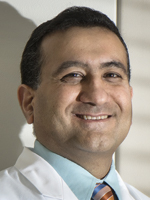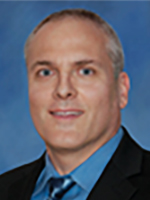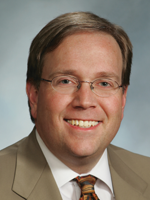Valerie Neff Newitt
December 2017—With the FDA having approved whole slide imaging for primary diagnosis this year, one obstacle to full acceptance of digital pathology remains: lack of interoperability. To topple that barrier, the Digital Pathology Association, the CAP through its Digital Pathology Committee, and DICOM Working Group 26 convened in October, during the Pathology Visions conference, the first Connectathon for digital pathology.
“The uptake of digital pathology hasn’t been as rapid as everyone had anticipated,” says Liron Pantanowitz, MD, professor of pathology and biomedical informatics, University of Pittsburgh Medical Center. “Many pathology departments know that if they purchase a digital pathology system it will not be easy to bring it back to the lab, plug it in, and get it to interact with everything else. There has been no plug-and-play option in digital pathology, and that has been a huge stumbling block.”

Dr. Parwani
Dr. Pantanowitz, a member of the CAP Digital Pathology Committee, says Connectathon was a milestone almost as big as the FDA’s recent approval itself. “Connectathon not only provided a venue for connecting machines able to talk to each other, but also it connected an entire industry with a commitment to move digital pathology forward.”
Anil Parwani, MD, PhD, MBA, a member of the CAP committee and a professor of pathology, vice chair of anatomic pathology, and director of pathology informatics and digital pathology shared resources, Ohio State University Wexner Medical Center, says of Connect-athon: “We thought it would be great if we could bring vendors together and have them show us that, yes, they can all connect and, yes, we can use standards”—in the way radiology does, for example—“and, yes, we can share these images.”
By all accounts, “yes, yes, and yes” were on full display at Connectathon, and a pathway to industry cooperation and digital pathology progression was blasted wide open.
One of the goals of Connectathon was to raise pathologists’ awareness that using DICOM for interoperability in digital pathology does work, says Bruce Beckwith, MD, one of Connectathon’s organizers and initial co-chair of DICOM Working Group 26. “We needed a public demonstration to proclaim, ‘We have a DICOM standard, and it is a good thing. Now use it,’” says Dr. Beckwith, chair of pathology at North Shore Medical Center, Salem, Mass. Support for whole slide imaging in DICOM—the Digital Imaging and Communications in Medicine standard for handling, storing, and transmitting images—was approved in 2010 and took the form of supplement 145, developed by DICOM Working Group 26.
But important questions have yet to be answered. Since the FDA approval in April of the Philips IntelliSite Pathology Solution for primary diagnosis, the CAP Digital Pathology Committee and the Digital Pathology Association have been getting a lot of questions from pathologists. Says Dr. Parwani: “Concerns range from ‘How do we store these images? What do we do when they are displayed?’ to ‘What is the end point of these images? What will happen to them? How will we have interoperability between these systems?’” The questions are right on target, Dr. Parwani says, because “even though we’ve been making digital slides for many years now, we’ve been using them in silos—in pathology departments.”

Dr. Pantanowitz
Lab information systems and digital pathology systems need to be connected bidirectionally from this point on, Dr. Pantanowitz says. “We need to be able to run certain applications, such as image analysis algorithms, or cloud storage, on top of digital pathology platforms. But it has all been lacking because there hasn’t been one standard for the vendors to follow.” Instead, he adds, each digital pathology system is proprietary and “locked down.”
“What would happen if the manufacturer of a digital pathology platform were to go out of business? How could pathologists access slides locked away in a defunct closed, proprietary system?”
Connectathon organizers, DICOM supporters, and others want to unlock closed systems. A precedent has been set in radiology, where the DICOM standard has been used for years. “There is no reason it can not work for pathology, too,” Dr. Pantanowitz says. “If everyone agrees to speak the same ‘language,’ it would be possible for all systems—LIS, scanners, viewers, software—to talk to and interact with each other. But to move digital pathology forward in this way requires vendors to cooperate, work, and ease competitiveness with each other.”
In advance of the October event, Dr. Beckwith explains, slides were sent to scanner manufacturers, with fictional clinical histories. They scanned the slides on their systems, doing whatever manipulations were needed to make the slides compliant with the DICOM interoperability standard, and then sent them to the picture archiving and communication system, or PACS. The manufacturers of viewers used DICOM compatibility to pull out the information they needed from the PACS. At the event, the viewers of the participating companies were set up side by side so attendees could look from one screen to the other to compare the images and information.
“Talking about interoperability is one thing; making it work properly is another,” says radiologist David Clunie, MBBS, who says Connectathon “served as a forcing function.” He is a medical informaticist, DICOM open source software author, and editor of the DICOM standard, and he was a presenter at Pathology Visions. “When people start turning up to look at your equipment, you have to get it right,” he says. “But there are a lot of details behind the scenes in terms of what a manufacturer has to encode and the decisions made around that data.”

Dr. Clunie
“If you are a single vendor and have acquired your data and have a viewer to view your own data, everything works from input to output. Your engineers are happy. But when you have a different team of engineers from another vendor taking your data and viewing it in a different system, then it becomes much more challenging.” The aim of the DICOM standard, he says, is to anticipate the challenges to ease the way.
Until it’s tried, though, “you don’t realize there are things you haven’t thought of yet,” Dr. Clunie says, describing the DICOM standard as a “paper design of how we think two systems should work in concert.” Not until it’s put to the test, between two different engineering teams, he says, can there be certainty. “We found this out in the critical weeks leading up to Connectathon. Many adjustments had to be made in the days before attendees started coming through the door.”
“One of the coolest things about Connectathon,” says Dr. Clunie, was seeing engineers from competing companies working together to solve a problem, “even though their project managers might be arch competitors.”
Philips, Ventana (Roche), and Leica Biosystems Aperio Digital Pathology participated with their slide scanners. Pathcore and AidPath provided their viewers, and Pathcore provided its PACS. “This first Connectathon was a starting point, not an ending point,” says Dr. Pantanowitz.

Dr. Beckwith
Dr. Beckwith says the reactions of attendees were positive. “There was a high level of interest, and attendees could see for themselves that systems from different vendors worked together just fine.” Interest was high, too, he says, in a panel discussion moderated by Drs. Pantanowitz and Parwani and in which he participated. “We were the next-to-last presentation at the meeting—a time slot that can be the kiss of death to a presentation. But instead people stayed to discuss what they had seen. They were genuinely excited to see that interoperability is possible.” Panelists talked about lessons learned and what can be improved with DICOM supplements. “We improved the process and made progress on the spot. At the same time, we spread the word about DICOM and interoperability in digital pathology. It was powerful,” Dr. Beckwith says.
Dr. Pantanowitz recalls the crowd as standing-room only: “Pathologists came, scientists came, vendors came.” And for the first time, he says, “everyone agreed to do a ‘handshake’ to push the competitive nature of digital pathology aside for a brief time to accomplish this. It’s a big deal. We’re taking down the barriers in digital pathology one by one.”
Most telling, Dr. Clunie says, was that Philips, with the only FDA-approved platform for primary diagnosis in the U.S., was a participant. “Philips has an opportunity to market a system that is completely closed, yet with its global experience it recognizes the need to go beyond that. When Philips comes to a Connectathon and sends out DICOM images, even though it doesn’t have to, that is very telling.”
Dr. Beckwith says it foretells the expansion of digital pathology platforms and the FDA’s expectation of the same. “I hear other companies will soon be making submissions to the FDA for primary diagnosis,” he says. “And because the FDA has had experience with radiology, which also began with a closed system and then was expanded to interoperable mix-and-match parts, they are comfortable with this progression.”
In fact, after the Connectathon panel discussion, the FDA offered the final presentation at Pathology Visions during which “an FDA representative said that interoperability and demonstration of willingness to adopt a standard in the industry is something the FDA looks favorably upon,” Dr. Pantanowitz says, making it easier for the FDA to approve a system.
Experts maintain that once two or three systems are available, users and potential users will start to identify the imperative for flexibility. “They may wish to replace a scanner with equipment from vendor A, use a storage archive from vendor B, and view it on equipment from vendor C,” explains Dr. Beckwith. “Then they may wish to use various artificial intelligence tools from different companies to analyze the digital images. This opens the floodgates to computer-assisted diagnoses. It will all be possible, and no one will want to be locked into just one manufacturer.”
Because having these options is so important, Drs. Beckwith, Clunie, Pantanowitz, and Parwani urge those considering entering the digital pathology space to include in their contracts with the companies a demand for interoperability within a specified time frame. “Have it in writing that the system will be DICOM compliant within 12 or 18 months,” suggests Dr. Beckwith. “It will buy a lot of flexibility down the road and will save a great deal of money in the long run.”
True standardization and interoperability in digital pathology will be a big win for pathology and patients. “We will be able to share images with the entire enterprise,” Dr. Pantanowitz says. “That opens a lot of opportunities. We will be able to share images with patients through a portal, to help educate them and lend better decision support. We will be able to share images with radiology and thereby possibly improve pathology-radiology correlations. We will be able to send images to experts in specific areas, in any geographic location, and expand consultations. We will be empowered to take advantage of artificial intelligence and computational analysis—who knows what that can uncover and detect for us?”
With true interoperability, Dr. Parwani, too, expects to see greater collaboration among radiology, pathology, oncology, and other “-ologies.” He foresees more automation in anatomic pathology and more widespread use of digital imaging because of the ability to start standardizing and integrating data flow. “This will enable us to make pathology a center of information. The work we are doing will no longer be limited to the pathology department, but instead it will move into the entirety of the health care solar system. The data flow will no longer stop at the microscope.”
“There are no more dead ends,” as Dr. Parwani puts it. “Now we are on a data continuum. There was a time this was all just like writing chalk on a blackboard in an attempt to conceptualize things. At Connectathon we turned that concept into action.”
[hr]
Valerie Neff Newitt is a writer in Audubon, Pa.